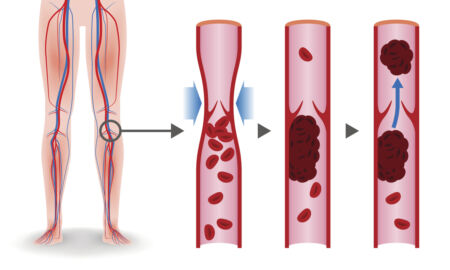
Veins transport blood from your periphery and then back into the heart. Humans are bipedal and very different from smaller four-legged creatures. Our blood needs to be propelled up into a vertical column at 3 to 4 feet in height from our feet up to our heart’s right atrium. A majority of the blood in the legs travels through the large major veins located in the limb’s deep areas. This accounts for 95% of venous return. The rest is carried by the superficial veins, which are the veins we see right underneath the skin and cause unsightly varicose veins. They end up ultimately joining the deep system behind the knee and in the groin. In the thigh and calf there are interconnecting veins that are referred to as perforators. They join together the superficial and deep systems.

Photo Credit: Image from Special Collections & Archives, the University of Liverpool.
There are three system that make up venous anatomy: perforating, superficial and deep. Of the main characteristics of deep veins is they run along the side of the arteries. Therefore, they frequently are referred to by the same name. Blood flows into the deep veins from the superficial veins. The perforating veins play the role of communicating veins in between the superficial and deep systems. Venous valves are unique to veins. They allow unidirectional blood flow towards the heart.
The list above is not at all comprehensive. However, it does represent all of the important veins that are involved when it comes to common venous problems like deep vein thrombosis, ulcers and varicose veins.
Unlike arteries, veins have one way valves located at intervals which are critical for enabling veins to function in a normal way.
Contact us at Center for Vein Restoration to schedule a consult.